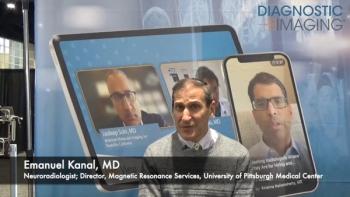
First Ultra-Wide Bore MRI Receives FDA Clearance
MRI with 75-cm core increases patient access and offers more services.
Global advanced imaging company United Imaging announced Tuesday it has received 510(k) clearance from the U.S. Food & Drug Administration for its uMR OMEGA MRI scanner.
With an ultra-wide 75-cm bore, the machine offers the widest bore on the market at any field strength, according to a company statement. The design is intended to accommodate a range of patients.
“The uMR OMEGA represents a critical advance for patients who will now have access to an enhanced patient experience and a more accommodating MRI scanning environment,” said Jeffrey Bundy, Ph.D. chief executive officer of UIH Solutions.
By offering a wider bore, he added, the uMR can better serve the 40 percent of Americans who are obese, as well as the 2.5 percent who have claustrophobia. Based on company details, the MRI scanner also includes a 680-lb table capacity, creating the first MRI imaging option for bariatric patients.
In addition, company officials said, the scanner provides new services, including acute imaging in the emergency room with a 5-minute stroke protocol and cardiac imaging with a single breath-hold that reduces the number of required scans. It is also a good solution for pediatric and geriatric patients who have difficulty remaining still for longer periods of time, they said.
“At United Imaging, we are all driven by patient experience: focusing on it, understanding it, improving it,” said Abram Voorhees, vice president of MR at UIH Solutions. “We intimately understand the anxiety that individuals can experience while undergoing an MRI, as well as the physical limitations of MRI machines today that can make a potentially life-saving study inaccessible. uMR OMEGA was created to remove the obstacles that often limit access for patients.”
The United States is the first company to receive the uMR with the first installation planned in United Imaging’s Houston showroom facility this summer.
Newsletter
Stay at the forefront of radiology with the Diagnostic Imaging newsletter, delivering the latest news, clinical insights, and imaging advancements for today’s radiologists.




























